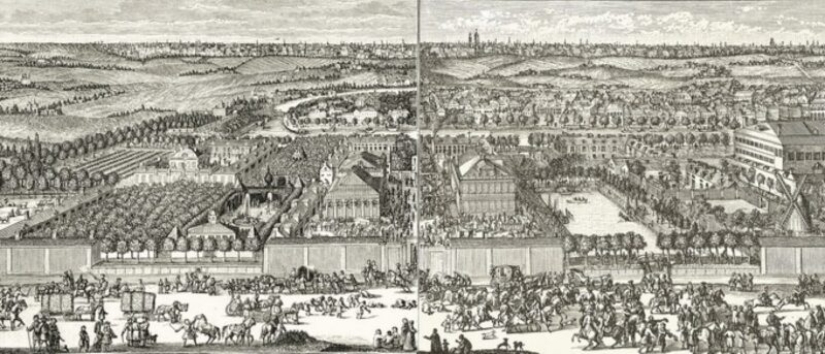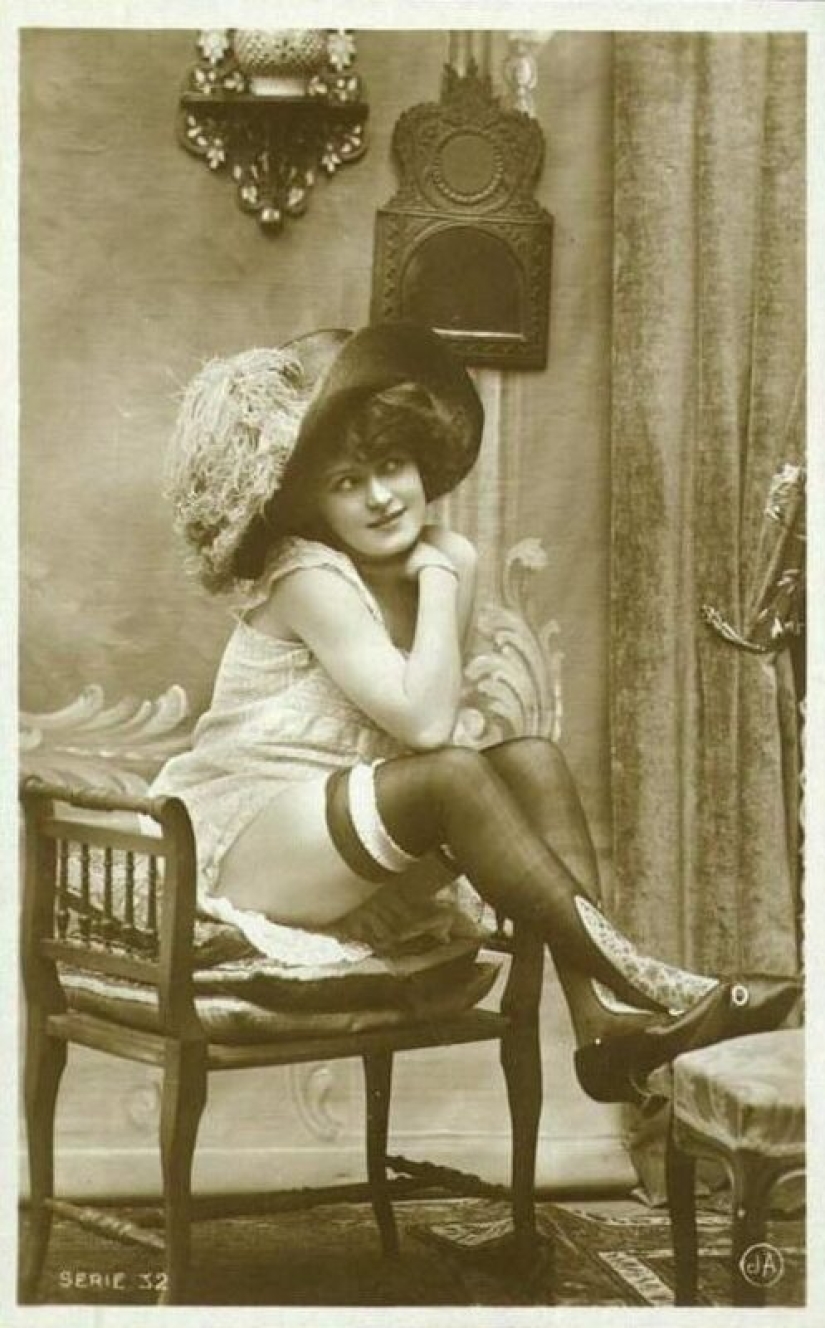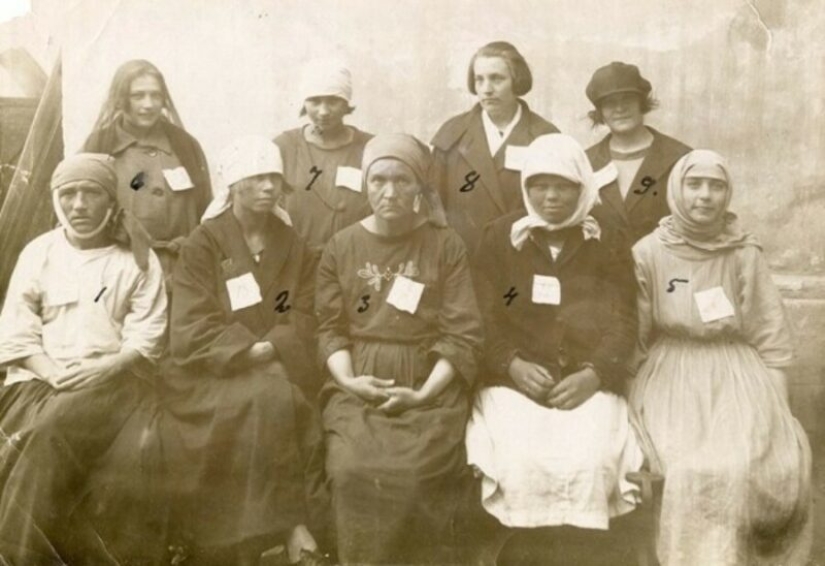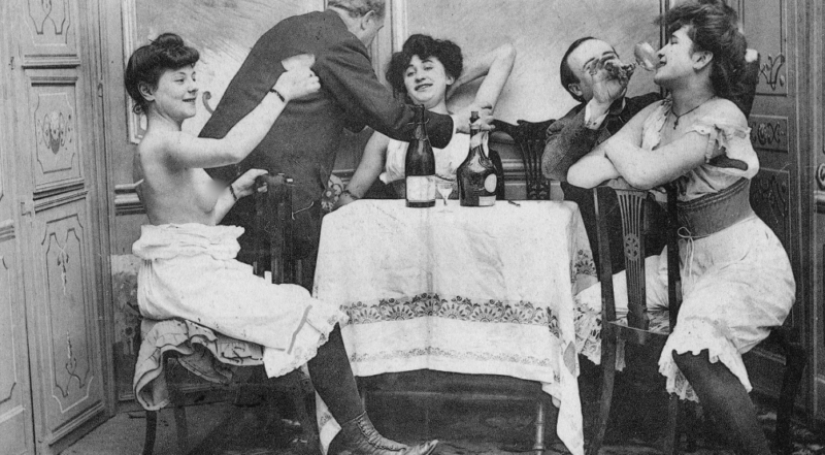"Spinning houses", "chorus girls" and other features of selling love in the Russian Empire
Categories: History
By Pictolic https://pictolic.com/article/spinning-houses-chorus-girls-and-other-features-of-selling-love-in-the-russian-empire.htmlProstitution is called the oldest profession and, most likely, this statement is not far from the truth. But in different parts of the world, in different epochs, corrupt love had its own characteristics associated with religion, mentality and, of course, with the current laws. We will tell you how professional prostitutes worked in The Russian Empire, since the time of Peter the Great, and before the arrival of Soviet power. (Careful! Adult content).

In pre-Petrine times, organized prostitution was absent. The church penetrated into all spheres of life of the inhabitants of Russia and there was no place for open body trade in such a society. Adultery, fornication and other forms of sexual life outside of marriage were strictly prohibited and violators were punished by public whipping.
Priestesses of free love until the end of the 17th century provided paid services in baths, in haylofts and in other secluded places. The Cathedral Code of 1649 prohibited pandering — the organization of meetings with"prodigal girls". Both the "madam" themselves and the clients who were physically punished and disgraced throughout the honest world could suffer. In such conditions, the maintenance of brothels was a dangerous and unprofitable business.
Under Peter the Great, European values flooded into the post-orthodox, patriarchal Russia. At the same time, a lot of negative phenomena were borrowed from a lot of positive phenomena. Along with tobacco, strong alcohol and other "charms", prostitution, put on stream, also got into Russia.
Tsar Peter Alekseevich brought many European specialists to Russia: sailors, soldiers, shipbuilders, architects and doctors. After them, those without whom a real European life is impossible poured into the country: cooks, distillers, servants and, of course, prostitutes.

The German settlement in the Peter the Great era
There is nothing surprising in the fact that the first center of selling love in the empire was the German settlement in Moscow — a place of compact residence of foreigners. Here, on the banks of the Yauza River, the Germans, the Dutch, the French and the British organized their life in the image and likeness of the European one. Life here was strikingly different from the usual Russian person and not everyone liked it.
This already indicates that the vices left the German settlement and the borders of the capital and reached other places of the empire. In the army, where there were their own doctors who used the service for free, in 1716 a new rule appeared — the gentlemen of the officers" who make themselves French diseases " were treated only at their expense. However, the treatment at that time was still specific.

On February 13, 1719, another royal decree was issued, "tightening the screws" in Moscow — "to find guilty women and girls who will not be subject to the death penalty in search cases." The identified prostitutes had to be forcibly imprisoned in "spinning houses", where women had to make yarn for state needs. At the same time, Peter ordered not to spoil such prisoners and feed them the same way as convicts.
Soon there were "spinning houses" in the new capital — St. Petersburg. The first institution opened its inhospitable doors in 1716 at 166 Fontanka Street and it was called the Kalinkinsky Workhouse at the St. Petersburg Tapestry Manufactory.
If under the reformer-emperor they did not stand on ceremony with the inhabitants of such houses, then under Elizabeth Petrovna occupational therapy was carried out with some indulgences. Women were given the right to hide their real name and be called numbers, as well as, if desired, wear face masks that hide their faces.
The Empress Catherine II, whom many accuse of debauchery, did not favor the representatives of the oldest profession too much. The empress took control of this problem on herself and personally dealt with issues of morality and the spread of "bad diseases".

Forced labor in the middle of the 19th century
In the "Charter of the Deanery" published by Catherine in 1782, prostitution and the maintenance of brothels were strictly prohibited. Violators were expected to face heavy fines, public censure and "straitjackets", where the perpetrators spent six months atoning for their guilt with hard work.
Since 1771, all industrialists were obliged to hire convicted prostitutes without talking and keep them at the factory until the deadline. Before that, the manufacturers were cunning, sending the young ladies back to the police stations, referring to their professional incompetence.
Under Catherine, they did not try to eradicate pimping and prostitution, but forced violators of the law to work for the good of the country and replenish the treasury. At the end of her reign, seeing the low effectiveness of the fight against sex workers, the Empress simply obliged them to undergo regular medical examinations.

Catherine's plans even included legalization, with the allocation of special places for brothels in cities, but death did not allow this plan to be realized. Paul I returned the rules that were introduced by his mother at the beginning of his reign, but because of his maximalism, he ordered to exile corrupt women to the factories of Irkutsk.
However, the struggle for morality was not too strict — according to this decree, only 69 women were detained and only 19 of them went to Siberia. They were mostly soldiers 'wives and" merry " widows. In the entire history of the Russian Empire, this was the most severe punishment for body trafficking.

Women involved in forced factory work
The passports of the ladies were taken away, and instead of them a "replacement ticket" was issued, where marks were placed on the passage of medical examinations and on the payment of mandatory state fees. In 1844, the detailed "Rules for Brothel Keepers" and "Rules for Public Women" came into force, regulating prostitution in all its manifestations.
In 1844, any trustworthy woman between the ages of 30 and 60 could get permission to open brothels. Only girls who had reached the marriageable age, that is, 16 years old, could be employees of brothels. The houses were inspected by doctors who identified the sick and sent them to hospitals for treatment.
The brothel keeper could be punished with a fine and deprivation of a license for "bringing to an extreme degree by excessive use". If desired, the prostitute could hand over the ticket and get her passport back. This was done by many who decided to quit the profession and get married.

Substitute ticket of a prostitute
Brothels in Russia were allowed to open only in certain areas of cities and their owners had to comply with the rules. Since 1861, a ban on signs and advertising was introduced, and windows were ordered to be closed with curtains and shutters. The brothel could be located no closer than 300 meters from churches, schools and colleges, although this rule was not strictly observed in the province.
There were almost always more people willing to work in a brothel than there were beds, so customers were served in turns and in shifts. During rest periods, women had to sleep on beds in twos and even threes. In their free time, prostitutes were forced to sit in a brothel, since the law forbade them to walk the streets unnecessarily or stand at the entrance to the institution. Therefore, the main entertainment of prostitutes was alcohol and gambling.

By the beginning of the First World War, the scale of prostitution had become incredible. In 1915, a soldier wrote home that the big cities of the empire, crowded with troops, are solid giant brothels. By 1917, prostitutes were no longer considered and their number was enormous. At the same time, visiting brothels was not censured and was considered an acceptable form of male leisure.
The October Revolution dealt a crushing blow to the industry, destroying the system and traditions in one fell swoop. A new era has begun in the history of sex services, which has given rise to a new generation of prostitutes and pimps, illegal and thoroughly criminalized.
Keywords: 18+ | Brothel | Laws | Peter I | Prostitution | Russian empire | St. Petersburg | Factory
Post News ArticleRecent articles

We have electric kettles in almost every kitchen. We use this household appliance not only at home, but also at work. It's hard to ...

Looks can be deceiving not only in humans, but some items, the real purpose of which is failing. At first glance, this fragrant ...
Related articles

What better way to warm up in the winter time than mulled wine, a warm hug and a hot movie? Some Hollywood blockbusters over the ...

Have you ever thought about what our life would be like if we chose not the path of technological progress, but unity with nature? ...

Here do not need the extra words! Share a selection of photos of beautiful girls in glasses, which are lovely in them, and no!

These hand-painted photographs of old Japan teach a history lesson about how life went on there in the Land of the Rising Sun at ...